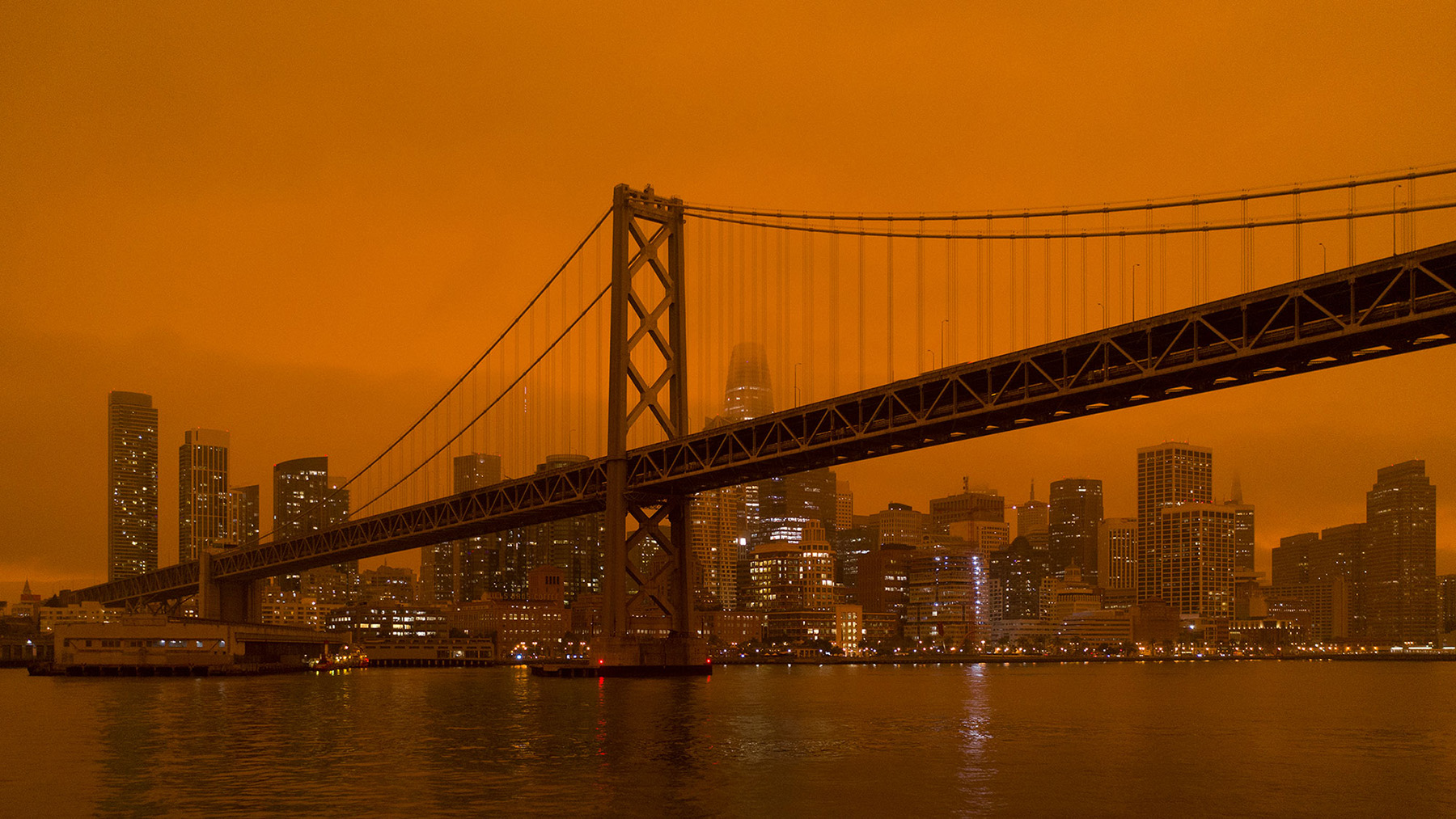Few of us in the Bay Area will forget that September morning in 2020, while hunkered down in the first year of COVID-19 isolation, we awoke to an eerie dark orange sky, during what became one of California’s worst fire seasons on record. In California, as in many parts of the West, wildfire smoke events are having significant impacts on our health, wellbeing and lifestyle.
These extreme wildfire events have increased due to climate change and other factors, producing smoke that can blanket urban and rural areas, creating unhealthy levels of fine particulate matter (PM2.5) air pollution, one of the greatest environmental risk factors for human health and mortality. Smoke especially impacts people in Northern California where many homes rely on the mild climate and nighttime ventilation for cooling, rather than air conditioning, and also low-income communities unable to afford air conditioning. Research using crowdsourced data shows that indoor PM2.5 nearly was nearly three times higher than normal during wildfire events.
A team of researchers at CBE recently created a new low-cost software solution to improve the air quality inside homes when the outside air becomes unhealthy due to wildfires or other sources. This concept takes advantage of internet-connected ‘smart’ thermostats coupled with publicly available sources of outdoor air quality data. This work is being led by CBE researchers Thomas Parkinson and Federico Dallo, with funding from CITRIS, a multi-campus center that strives to advance technology in order to address pressing societal challenges. Other contributors include Carlos Duarte and Stefano Schiavon of CBE, Mark Modera of UC Davis and Brett Singer of Lawrence Berkeley National Laboratory. Additional funding is provided by CBE’s consortium of industry partners.
The approach was based in part on insights revealed during a review of data from smart thermostats from Ecobee, gathered through their ‘Donate your Data’ program. CBE’s research team analyzed data from nearly 8,000 California homes, which showed that people are not taking advantage of standard features in homes that can be used to improve indoor air quality during wildfires. This includes using the fan-only mode of the AC or furnace — without cooling or heating — while reducing outside air intake. To make this most effective, homeowners must also install high quality air filters, such as those designated MERV 13 or higher, readily available in home-improvement stores.
The proposed solution requires only software and a smart thermostat, and utility rebates may partially or fully offset the cost of these devices. As a result, the concept can be readily scaled up with little or no cost to homeowners. The system monitors near real-time outdoor air data from sources such as the EPA’s AirNow network or PurpleAir. When PM2.5 levels recorded by these systems reach a specified unhealthy level, the software automatically turns on the fan mode for the AC or furnace for a period of time so that the air inside the homes is filtered. This includes closing the outside air intakes where possible.
The research team has installed a prototype of this software in five Bay Area homes, along with low-cost air-quality sensors to monitor indoor PM2.5 levels that will help them evaluate the effectiveness of the system. They will use the field test results, combined with modeling the indoor air quality of typical homes, to improve and refine the system for wider adoption. Preliminary modeling studies show that triggering the fan mode of an AC system provides air filtration equivalent to what would be provided by numerous portable air purifiers.
The researchers believe this relatively simple intervention can greatly improve California’s resilience to wildfires, while improving health for millions of residents in California and beyond. After the completion of the study, the team hopes to connect with makers of smart thermostats to have the software implemented in the next generation of these devices. They also hope that knowledge gained through this work will benefit organizations responsible for air quality-related health policies. Thomas Parkinson describes this research as “a proof of concept, something we can hand off to others who can implement it and affect real world change.”
The University of California has patents pending on the technologies described in this paper. Photo: Smoke from the North Complex Fire settles over San Francisco, by Christopher Michel from Flickr.

